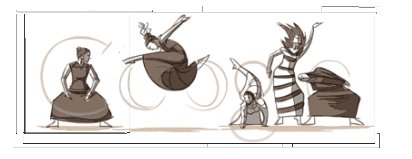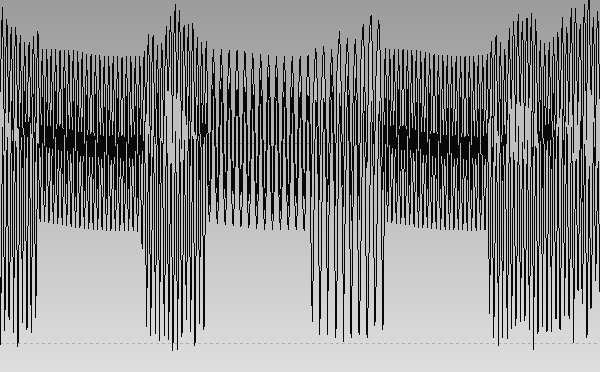
Above are screenshots of Google's search page today, from WIZARDISHUNGRY. The dancer moves from right to left in this animated middlebrow magazine illustration. These are not GIFs, of course, I assume its HTML5 and/or canvas. Some commentary, from twitter:
tommoody: some bad interpretive dancing and anti-aliasing happening on Google's main search page right now
tommoody: if god had wanted drawings to be anti-aliased he would never have made pixels rectangular
WIZARDISHUNGRY: v: i dont understand why they didnt just use an animated gif instead of flipping thru '150 divs with a png in each / jw: @tommoody / v: fuuu
WIZARDISHUNGRY: The compositing artifacts in today's Google sketch are fugly bullshit; too cool for a gif? http://yfrog.com/gz6gi4j @tommoody
tommoody: Google means to phase out animated GIFs and replace them with this crap: http://yfrog.com/gz6gi4j (thx @WIZARDISHUNGRY for pic)
petcortright: i want my google back

